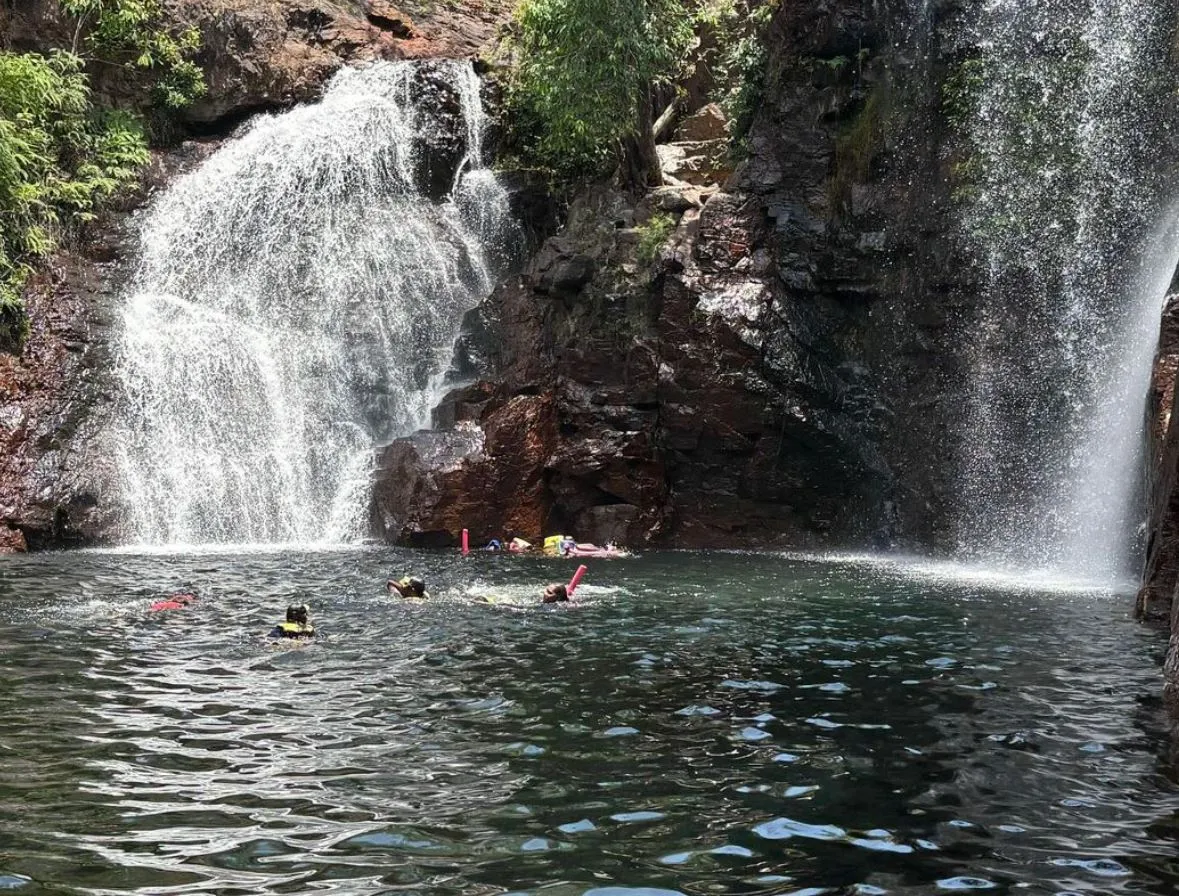Litchfield National Park in the Northern Territory is a treasure trove of natural wonders, waterfalls and greenery that change dramatically with the seasons. From the thunderous waterfalls of the wet season to the clear blue skies of the dry season, each time of year is a different way to experience this amazing park. Here’s your ultimate guide to the best time to visit Litchfield National Park, with insider tips on must-see spots, road conditions and seasonal highlights.
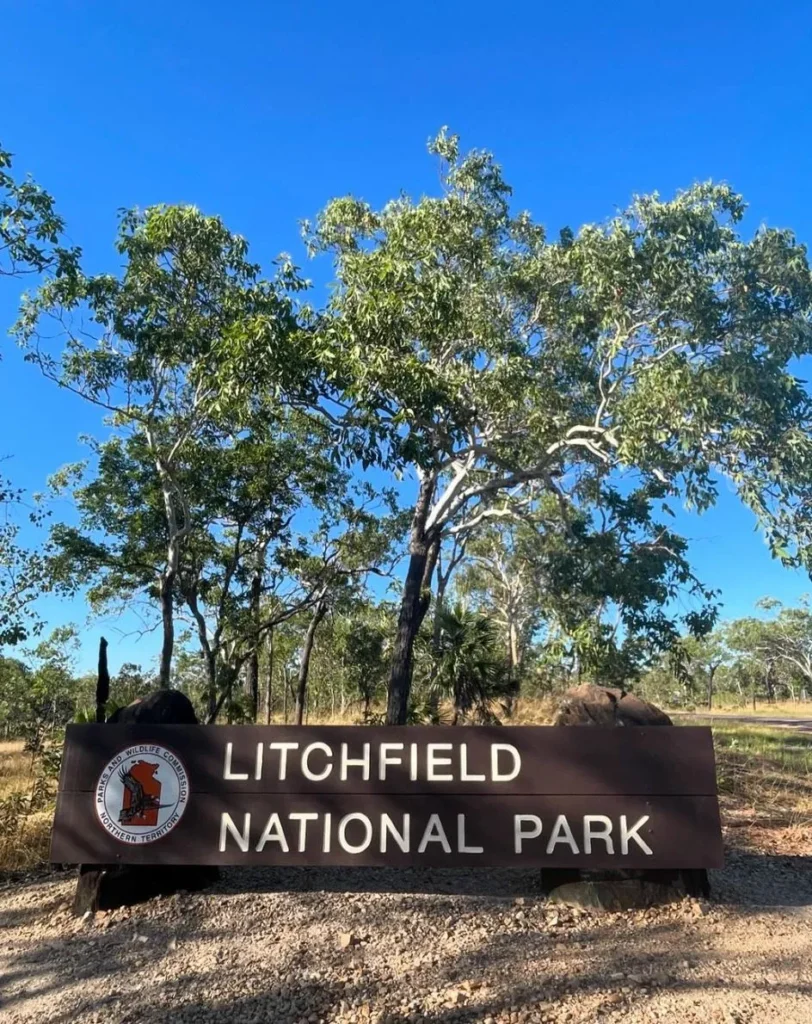
Dry Season (May to October)
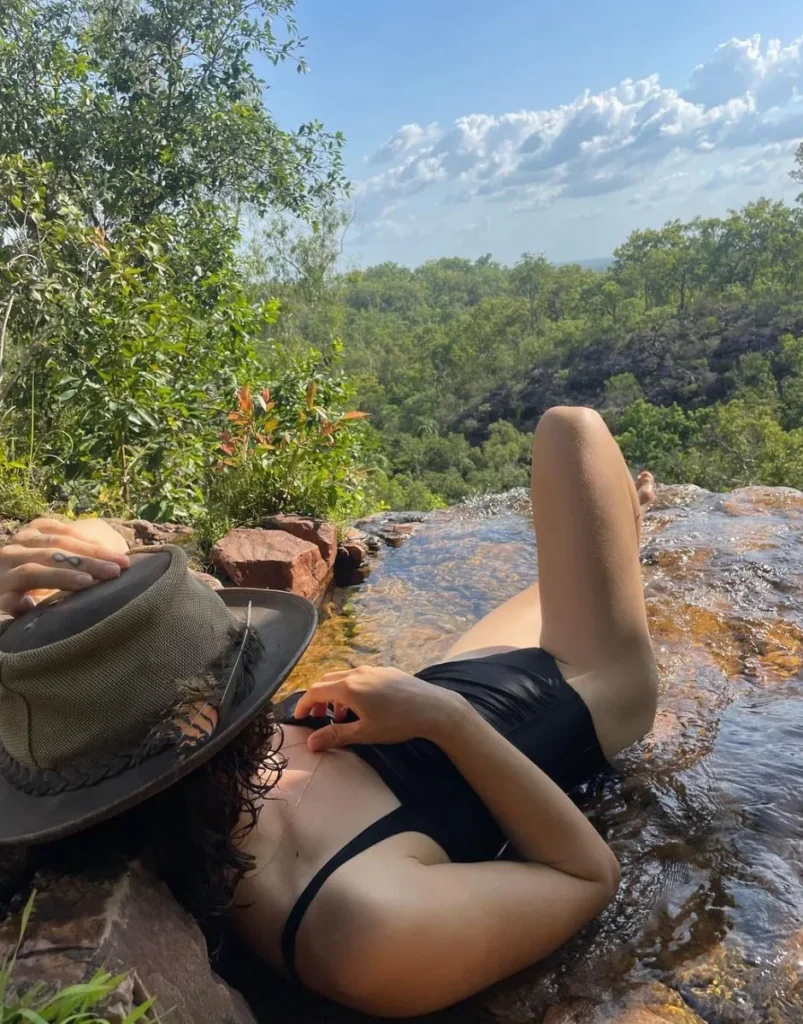
The dry season is the most popular time to visit Litchfield National Park. It’s the peak tourist season when the weather is warm and dry, perfect for outdoor adventures like hiking, swimming and exploring the park’s natural wonders.
- Weather: May to October daytime temperatures are 20°C to 32°C (68°F – 90°F), nights are cool, great for day trips and camping under the stars.
- Access to Swimming Spots: All major swimming holes like Florence Falls, Tjaynera Falls (Sandy Creek) and Walker Creek are open during the dry season. The water levels are perfect, pools are refreshing and the water is cool under the sun.
- Scenic Views and Sealed Roads: During the dry season the road conditions are perfect, sealed roads make it easy to get to all the main attractions. Tolmer Falls and Greenant Creek have stunning views over rocky outcrops, Florence Falls has a double waterfall into a crystal clear swimming pool.
- Seasonal Tips: For a more in-depth experience, spend a couple of days exploring Litchfield’s waterfalls and natural wonders. Stay at a campground like Florence Falls Campground or Litchfield Tourist Park, and you can start early and avoid the crowds at the popular spots. And don’t forget to bring water bottles and a pool noodle to float in the deep plunge pool.
- Things to do: Dry season is ideal for long Litchfield National Park day tour, scenic flights over the monsoon rainforest and waterfalls. If you’re interested in Indigenous culture there are tourism operators that offer guided tours to the park’s Aboriginal culture and rock art sites.
The Wet Season: Explore Litchfield’s Green Haven (November to April)

From November to April, Litchfield becomes a green paradise. The rainy season, or tropical summer, brings monsoonal rains, and the waterfalls become cascades.
- Weather and Access: Temps are 25-35°C (77-95°F) and high humidity. While the weather can be tough this time of year, it’s worth it for the waterfalls and fewer people.
- Water Levels and Wildlife: Water levels are at their highest, so Florence Falls, Tolmer Falls and Sandy Creek Falls are even more spectacular as they tumble over the rocks. But be careful—some swimming areas may be closed due to high water levels or crocodile waterways. Look out for estuarine crocodile warnings and follow visitor safety guidelines.
- Exploring the Monsoon Forest: The monsoon forest is in full swing during the wet season, with the ground covered in green and tropical plants everywhere. This is the best time to see the giant termite mounds and magnetic termite mounds, which stand like sentinels over the landscape.
- Get Adventurous: The wet season is for the adventurous. Try the Cascades Hike, a tough hike to secluded plunge pools or take a scenic flight to see the park’s green canopy and waterfalls. Some roads are unsealed and 4WD only but it’s worth it to get to the lesser known areas like Surprise Creek Falls and Shady Creek.
- Insider Info: During the wet season fewer amenities are open but a Wanderer Litchfield tour gets you safe access to Greenant Creek and Tolmer Creek with experienced guides who will share Indigenous culture, flora and fauna knowledge.
The Shoulder Seasons: April and October – Weather and Accessibility
If you want a quieter, more flexible experience the shoulder seasons in April and October are the perfect combination of warm weather, open trails and fewer people.
- Ideal Temperatures and Scenic Beauty: April and October have daytime temperatures of 22°C to 34°C (72°F – 93°F), low humidity and less rainfall. You can visit the park’s popular spots like Florence Falls and Tjaetaba Falls with the views and clear water of the dry season without the crowds of the peak season.
- Access to Iconic Spots: Most of Litchfield’s iconic spots are open during the shoulder seasons including the famous swimming spots and popular areas like Walker Creek, Tolmer Falls and Greenant Creek. You can take a leisurely walk along link walks to get to rock ledges with stunning views or picnic tables with views of the rainforest.
- Perfect for Nature Enthusiasts: With vibrant landscapes, interesting rock formations, and stunning rock art sites like Ubirr Rock nearby, the shoulder seasons are a nature lover’s dream. Capture the views without the crowds of the high season and take a few hours to relax at secluded spots like the deep pool at Sandy Creek Falls.
Must-See Highlights and Top Tips
Florence Falls
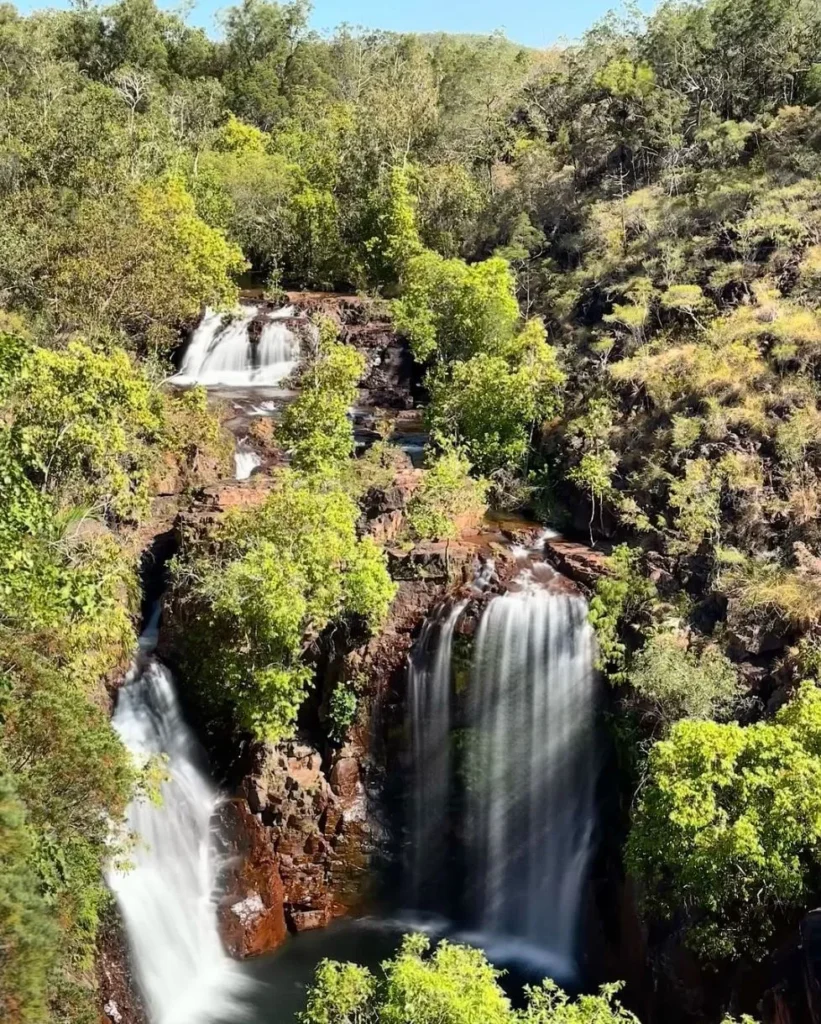
Just near the Florence Falls Campground this double waterfall is one of the park’s best, with a swimming hole at the base surrounded by greenery and rocky outcrops. A great spot to relax, swim and cool off.
Tolmer Falls
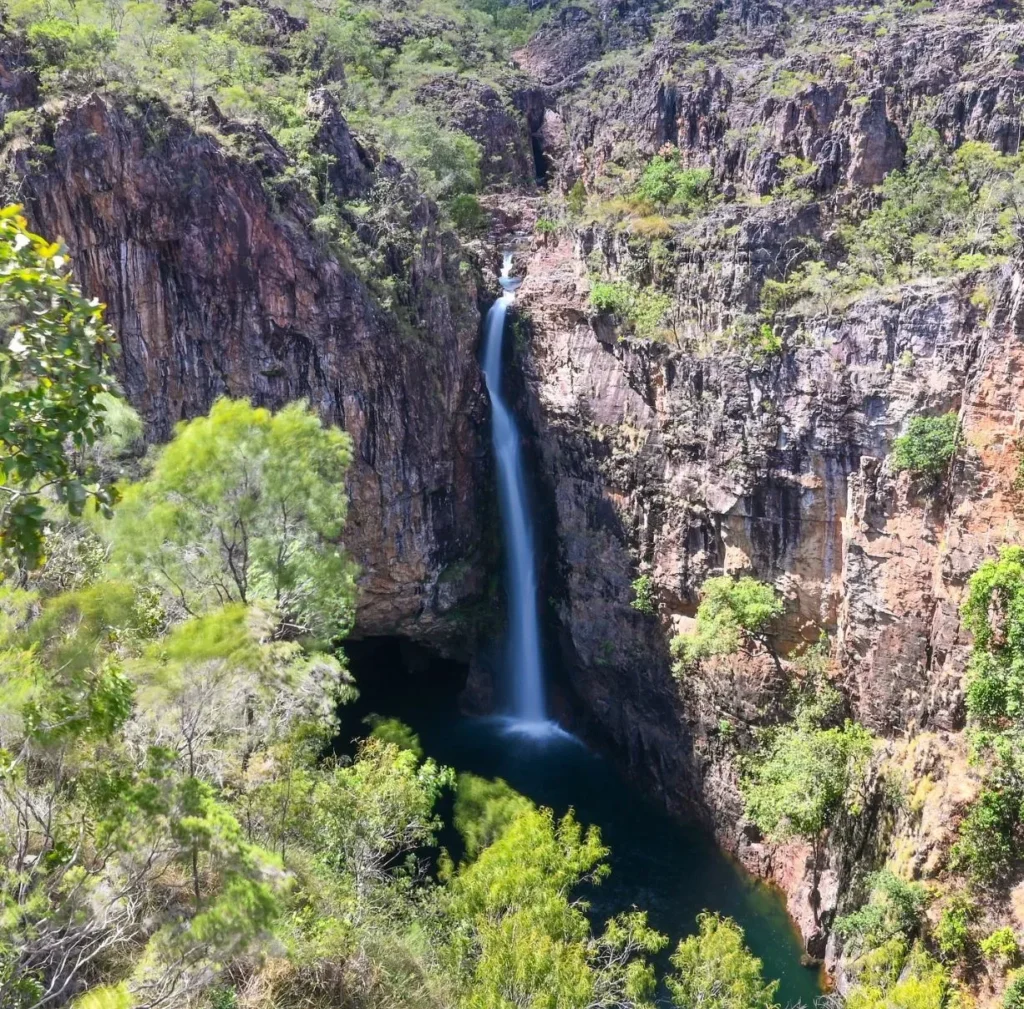
A hidden gem in the park, Tolmer Falls has a deep plunge pool at the base of the waterfall. The pool is not open for swimming but the views from the lookout are amazing. Short walk from the car park and a great photo opportunity.
Tjaynera Falls (Sandy Creek)
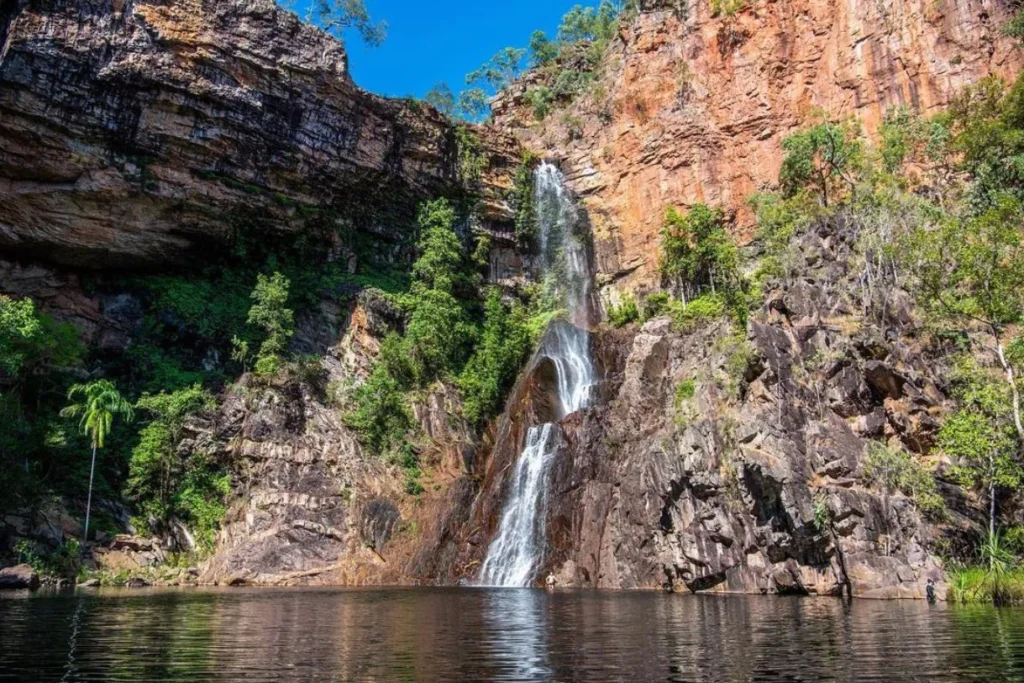
Tjaynera Falls (Sandy Creek) is a great escape from the crowds. 4WD access only, this area is perfect for those looking for solitude. The plunge pools are surrounded by greenery and a cool water haven.
Walker Creek
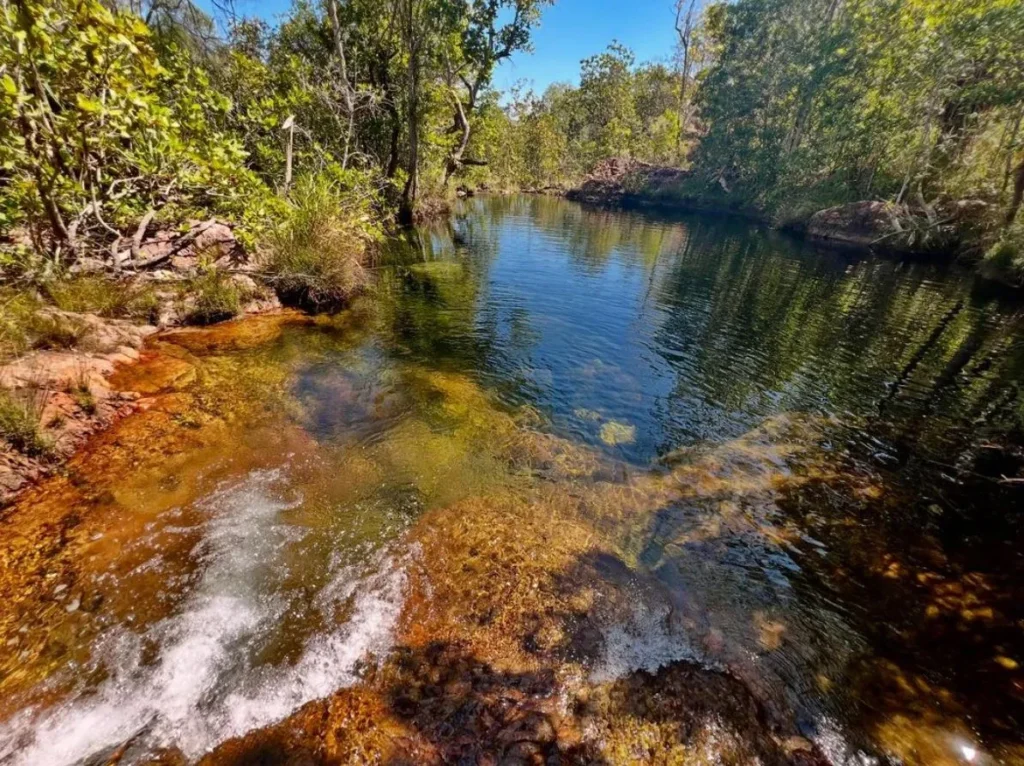
Walker Creek is great for hiking and swimming with a range of accommodation options nearby. The walk to the falls goes through monsoon rainforest, rock art sites and some of Litchfield’s best natural attractions.
Magnetic Termite Mounds
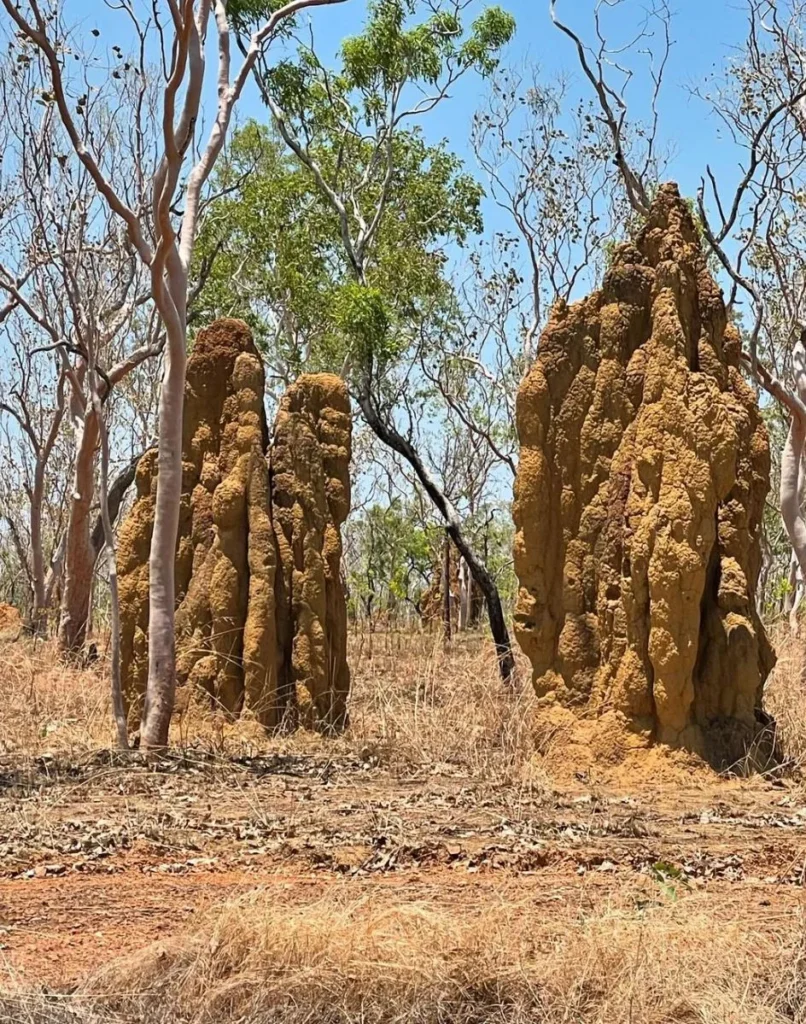
The magnetic termite mounds are a Litchfield highlight, up to 3m high and perfectly aligned. A popular attraction to learn about the park’s ecology.
Berry Springs Nature Reserve
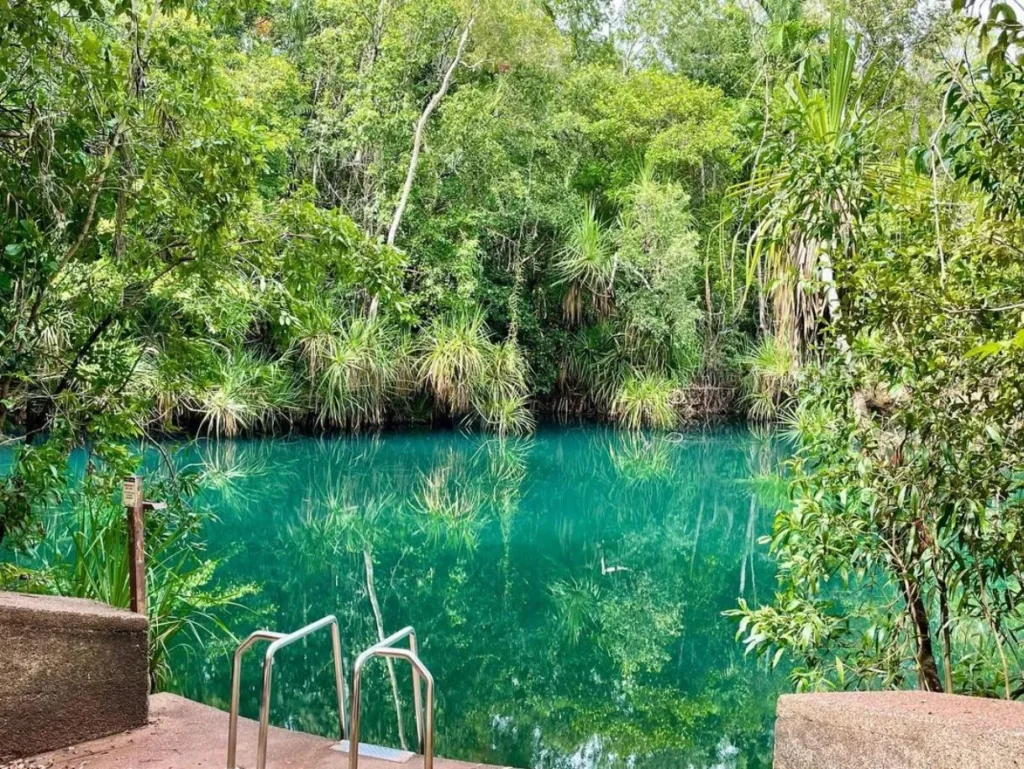
Just outside Litchfield, Berry Springs is a swimming spot and picnic area surrounded by monsoon forest. Many visitors to Litchfield make a day trip here to cool off and enjoy the shade.
Indigenous Cultural Experiences
For those interested in learning more about Aboriginal culture, several tour operators offer cultural tours and talks about the Warray Aboriginal people and other Indigenous communities and ancient rock art sites.
Top Tips
- Book in Advance: To avoid disappointment during peak season, book Litchfield Tours, scenic flights and Litchfield National Park Caravan Parks in advance. Whether you want to camp under the stars or stay in comfort at Litchfield Safari Camp, book early.
- Be Prepared: In the wet season, pack insect repellent, a rain jacket and waterproof shoes. In the dry season, pack sunscreen, a hat and plenty of water bottles.
- Fitness Level: While many areas are sealed roads, some of the 4WD tracks are more rugged and require a higher level of fitness. The Cascades Hike and some of the tougher hikes to secluded plunge pools and rock ledges require proper footwear and fitness.
- Bonus: If you’re visiting Kakadu and Litchfield, check for bundled tour packages. Look for deals and discounts and time your visit for both parks to be at their best.
FAQ
When is the best time to visit Litchfield?
Dry season (May to October) is the best time to visit as the weather is perfect for swimming holes, waterfalls and views.
Can I swim in all the waterfalls in Litchfield?
Not all waterfalls are swimmable. Florence Falls, Wangi Falls and Buley Rockhole are the popular swimming spots, Tolmer Falls is for viewing only due to safety reasons.
Is it safe to visit Litchfield in the wet season?
Yes, some areas may be closed due to water levels and road conditions. Check with Parks Litchfield NP for safe access during the wet season.
Are there crocodiles in the swimming areas in Litchfield?
Most swimming areas are patrolled, but estuarine crocodiles may be present in some areas after floods. Always follow safety signs and only swim in designated areas.
How do I get to Litchfield National Park from Alice Springs?
Litchfield is from Darwin, 1.5 hours drive. From Alice Springs, visitors often fly to Darwin and then drive to Litchfield for a few hours or a couple of days.
